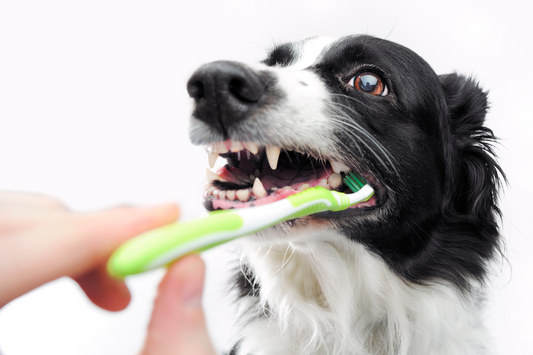You start to notice your pet reacting oddly to the food they once enjoyed. The favorite treats now leave your pets restless, uncomfortable, and itchy. You have been told that dog allergies to pet food can be pretty common - but you aren’t sure if what your pet is showing is a pet food allergy.
Signs of food allergies in pets manifest in skin sores, rashes, watery eyes and nose, fuzziness, and frequent bathroom trips for your dogs. When allergies are more severe than usual, your dogs and cats may show breathing difficulties through wheezing.
With all the cues to remember when it comes to caring for your furbabies, knowing the signs of pet food allergies can save your pet from life-threatening circumstances.
If you’re a fur parent who wants to avoid health concerns associated with pet food allergies, this guide is for you. We’re diving deep into what to look out for, how to work with your vet, and what to do next to help your pet go up and running again.
Dog Pet Food Allergies: Why You Should Be Cautious with What You Feed Your Pets
Pet food allergies are real, but they aren’t common. Since most pet owners are unfamiliar with the possibility of pets developing allergies, it’s easy to mistake these allergies for other health concerns and consequences.
Just like humans, when pets eat the same type of food for a course of time, allergies can surface. Growing dogs and cats still have to develop immune systems, which can cause them to mistake certain ingredients as threats to the body, thus resulting in an allergic reaction.
Food allergies belong to a condition called Cutaneous Adverse Food Reaction (CAFR), which allergies share with food intolerances.
Most Common Triggers of Pet Food Allergies in Dogs
Most food allergies in dogs connect back to chicken, beef, eggs, and dairy. Experts highlight that meat alone is not the culprit - it’s the protein. Your dog’s immune system can mistake protein not as an ingredient but as an invader.
Does the protein qualifier make vegetables a safe choice? Not always considering that vegetables can also be a high source of protein.
These few tips on dog food and allergies can serve as a guide for pet owners to skid away from food that might result in an uncomfortable allergic reaction:
- Carbohydrates are a great choice if you want to err on the safe side. Starches are safe, but keep an eye on the few that carry protein as some highly allergic dogs can still react.
- Fats are okay, as long as they’re handled with care. Fats and oils are often free from protein so they can be safely incorporated into a diet.
- Peanuts don’t cause allergic reactions in dogs. If your dog gets one, it won’t be as severe compared to human peanut reactions. Give that peanut butter treat to your fur baby.
- Be wary of the labels. Experts have proven that food labels don’t always tell the real deal. Do a food test before giving any dog food the green light.
Signs of Food Allergies in Dogs
The scope of signs to look for when determining food allergies in dogs can range from physical, gastrointestinal, and behavioral. A combination of dog food allergy symptoms can prompt you to talk with your pet’s vet.
Common Symptoms of Pet Food Allergies in Dogs
-
Sneezing
-
Itchy paws
-
Hot spots
-
Scaly skin
-
Rashes
-
Watery eyes and nose
-
Ear infections
-
Eye redness
-
Fur loss
-
Scaly ears with bacteria build-up
Gastrointestinal Signs of Food Allergies in Dogs
Dogs can also exhibit allergy symptoms through their gastrointestinal functions. The most common signs of gastrointestinal irritation due to food allergies include:- Vomiting
- Pain in the abdomen
- Constipation
- Diarrhea
Behavioral Symptoms of Food Allergy in Dogs
Apart from checking how your dogs react to certain food, monitor how they behave. Some signs and symptoms to look out for include:
- Restlessness
- Biting paws and tail
- Reduced interest in eating
- Increased scratching on furniture or owner’s legs
What to Do Next: Remedies for Food Allergies in Dogs
If you notice the first signs of food allergies in your dog, contact the veterinarian immediately. They can guide you through a series of remedies ranging from medications to determining a diet plan that will suit your dog’s sensitivity to ingredients.
It’s crucial to check with your vet for the best approaches in dealing with your dog’s allergy to particular food groups. You and your vet can work on the following remedies:
Administering an Allergy Test
Blood tests and patch tests allow the vet to determine the main triggers for your pets’ allergic reactions. Most experts recommend taking both tests to ensure accuracy.
Giving Antihistamine to Your Dog
Antihistamine medications are usually safe to use and are vet-approved. These remedies can significantly lessen irritation and itch which can lead to skin infections. Topical ointments - as long as cleared by the vet - are also safe to administer.
Doing a Trial and Error of Dog Food Options
Clearing any potential triggers is an integral step to solving your pet’s allergy concerns. Your vet will help you analyze which food groups are causing negative reactions to your dog.
-
Dogs get their energy and nutrition from the food you give them. Unfortunately, the dog food you provide them can also be the bane of their growth. Keeping an eye on the signs of dog food allergies can help you take a safer, better route for your pet’s feeding journey.




